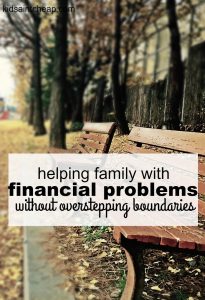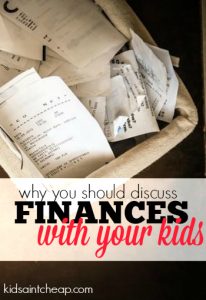
Most parents want their kids to grow up with strong values, confidence, and the ability to take care of themselves in the real world. But when it comes to money, many of the habits we pass down aren’t lessons we’ve thought about deeply. They just sort of happen—through our behaviors, reactions, and the unspoken cues our kids absorb over time.
That’s where the problem begins. Children learn far more from what they observe than what they’re told. If we handle money with shame, fear, impulsivity, or silence, they take those messages to heart and carry them into adulthood. And while no parent is perfect, especially when dealing with financial pressures, it’s worth recognizing the habits that could quietly set your kids up to struggle.
Let’s take a look at six money habits that might seem harmless on the surface but can plant the seeds for future financial hardship.
1. Avoiding Money Conversations Entirely
Many parents think they’re protecting their kids by not talking about money. They may believe it’s inappropriate, too stressful, or simply “adult stuff.” But silence doesn’t protect kids. It creates mystery and fear. When money is treated like a secret or taboo topic, kids may grow up feeling anxious, ashamed, or clueless about how to manage it.
Children need age-appropriate conversations about how money works, why budgeting matters, and how choices affect long-term outcomes. When parents normalize those talks, kids grow up viewing money as something they can understand and manage, not something to avoid or fear.
2. Modeling Emotional Spending
Everyone has tough days. But if your coping mechanism is “retail therapy,” your kids are watching. Over time, they begin to associate spending with soothing, reward, or control. That emotional connection to money, especially spending, can make it hard for them to make rational decisions when they’re stressed later in life.
It doesn’t mean you can never enjoy a splurge. But when spending becomes the default response to disappointment, boredom, or celebration, it teaches kids that money is for mood management, not intentional living.
3. Never Letting Kids Handle Money
It’s common for parents to want to take full control over finances, especially when kids are young. But if children never get hands-on experience with money—earning it, spending it, saving it—they don’t develop confidence. They may reach adulthood with a bank account but zero skills in managing it.
Letting kids handle their own money in small, safe ways helps them build real-world decision-making. Whether it’s through allowance, chores, or budgeting for something they want, they need those early experiences to make mistakes, learn from them, and grow more capable.

4. Equating Money With Morality
Some parents unintentionally frame money as a moral issue. They might say things like, “People who have money are greedy” or “We can’t afford that because we’re not like those people.” While these statements may come from financial frustration, they send a message that being poor or rich reflects your character.
Kids pick up on that. They may develop guilt when they earn more later in life or feel they don’t deserve financial security. Or worse, they may sabotage themselves financially to stay aligned with what they believe makes them “good.” It’s important to separate money from moral value. Financial success doesn’t make someone better or worse. It just reflects how they’ve managed their opportunities.
5. Using Money as a Weapon or Bribe
When parents use money to control behavior, whether by withholding it as punishment or offering it as the only reward, it creates a transactional view of relationships and self-worth. Kids may grow up believing love, approval, or security must be bought or earned through performance.
This kind of conditioning often leads to unhealthy dynamics in adulthood. They may tie their self-esteem to income or seek out relationships where money is used as power. Discipline, love, and boundaries should exist separately from money. Otherwise, the lessons get dangerously tangled.
6. Living Beyond Your Means Without Explanation
Sometimes, life requires financial juggling. But when kids grow up in a household where it looks like money is unlimited without context, they develop unrealistic expectations. If they see constant shopping, new gadgets, and lavish spending, they may assume that’s what adulthood looks like, even if debt is quietly stacking up behind the scenes.
If parents never explain the sacrifices, trade-offs, or financial planning behind big purchases, kids don’t learn to weigh their own choices. A little transparency, like explaining why you chose a road trip over a luxury vacation, can go a long way in helping them understand value versus appearance.
Start By Being Aware
Financial habits are like invisible hand-me-downs. We may not realize we’re passing them along, but our kids inherit them all the same. The good news is that change is always possible. Awareness is the first step. When parents start paying attention to the messages they send, intentionally or not, they can begin to rewrite the narrative for the next generation.
You don’t need to be a financial expert. You just need to be honest, present, and willing to grow alongside your child.
Have you caught yourself passing down a money mindset you wish you hadn’t? What would you do differently if you could go back?
Read More:
9 Money Moves Every Teen Should Know Before They Turn 18
Top 10 Financial Literacy Books for Kids to Teach Money Skills Early
Riley is an Arizona native with over nine years of writing experience. From personal finance to travel to digital marketing to pop culture, she’s written about everything under the sun. When she’s not writing, she’s spending her time outside, reading, or cuddling with her two corgis.




































 Do you dream of becoming a stay-at-home mom but your family depends on your income? Your dream may not be impossible. It starts with a plan, a lot of self-compassion, and determination. I know from experience. Our most effective tool on our journey to a single-income family with an at-home parent started with a stay-at-home mom budget.
Do you dream of becoming a stay-at-home mom but your family depends on your income? Your dream may not be impossible. It starts with a plan, a lot of self-compassion, and determination. I know from experience. Our most effective tool on our journey to a single-income family with an at-home parent started with a stay-at-home mom budget.


